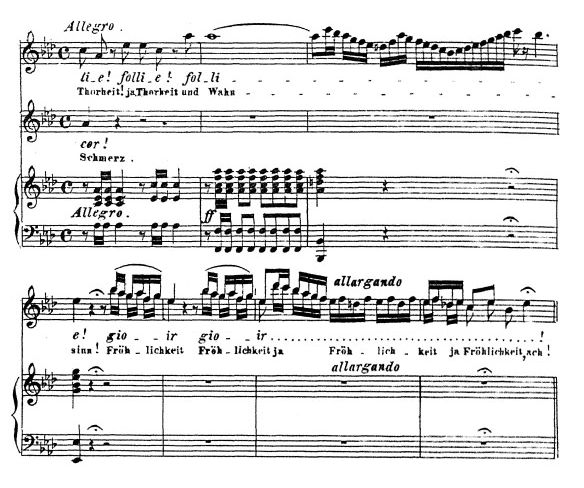
Value Of the Twelve Tone or Two Octave Exercise
One of the fundamentals of singing involves muscular coordination.
Of course, all exercises have some bearing on different aspects of singing because all is inter-connected. Yet, exercises also have focus. The focus of the Twelve Tone or Two Octave Exercise is for stretching and for developing coordination between the closer and stretcher muscles – chest and falsetto.
First, this exercise is arpeggiated, meaning that it has wider steps, like jumping up and down the staircase taking two or three steps at a time instead of single step by single step. The wider steps tend to release tension and help us to let go, like stretching as opposed to lifting weights.
Second, this exercise is over a wide range which encourages both muscle systems, chest and falsetto, to work together because we literally are moving from one extreme to the other, from the pitch range where one muscle has its home to the pitch range where the other muscle has its home. As we move back and forth, the muscles learn how to coexist.
One of the most common ways to structure this exercise would be to begin in our normal lower voice (chest), yodel or flip to falsetto on the way up, then back to normal lower voice on the way down. As the voice develops there will be the appearance of the “full voice.” This exercise continues to be valuable in its ability to encourage muscular coordination in an ever increasingly complex relationship.
Finally, this exercise is helpful in rebalancing if balance is lost, like if there is too much heaviness on the top or lightness on the bottom. This ability to rebalance is due to the exercise’s design of encompassing a wide range and equal, or mostly equal, steps on either side. A loose analogy would be sitting on a seesaw; rocking back and forth with the goal being to balance so the seesaw becomes level!
about the author
Allen Rascoe Allen has been enjoying singing since he was a little kid. He officially studied voice at ECU and USC. However, he ran... Read More

RECENT ARTICLES
-

Career Your Opportunities for a Fulfilling Career in Singing
-

Basic Skills, Beginners, Tips Tips To Improve Your Singing Voice
-

Exercises, Warmups 10 Vocal Warm-ups to Change the Way You Sing
-

Basic Skills, Beginners, Exercises, Songs, Voice Teachers, Warmups What is My Vocal Range – Identify, Master and Expand Your Range
RECENT IN KNOWLEDGE
Recent Topics
- Beginning Voice Lessons (1)
- Breathing Techniques (1)
- Confidence (1)
- Experienced Teacher (1)
- Kids Singing Lessons (1)
- Musical Career (1)
- Practice (1)
- Private Lessons (1)
- Professional Singer (2)
- Sing (1)
- Singing Teachers (2)
- Style (1)
- Teach Online (1)
- Vocal Exercises (1)
- Vocal Health (1)
- Vocal Music (1)
- Vocal Pitch (3)
- Vocal Range (4)
- Voice Coach (1)
- Voice Exercises (2)
- Voice Training (4)
- Young Vocalist (1)
Categories
- Basic Skills (7)
- Beginners (8)
- Career (2)
- CCM (1)
- Contemporary Commercial Music (1)
- Crossing Over (1)
- Exercises (2)
- Online Lessons (3)
- Online Voice Lessons (1)
- Songs (2)
- Students (6)
- Tips (4)
- Vocal Coaches (1)
- Voice Teachers (2)
- Warmups (2)
Testimonials

















